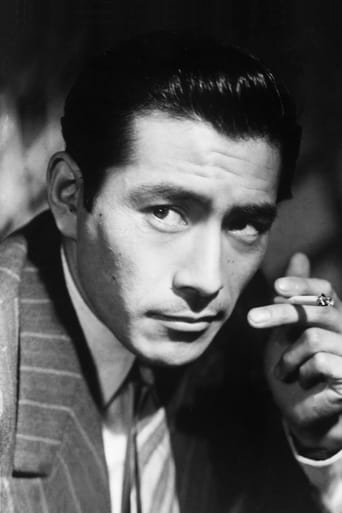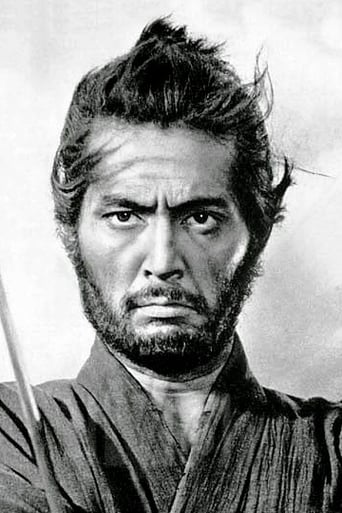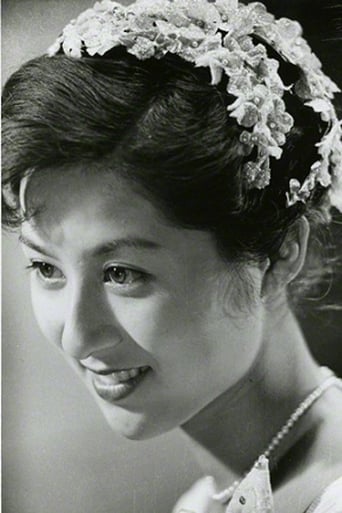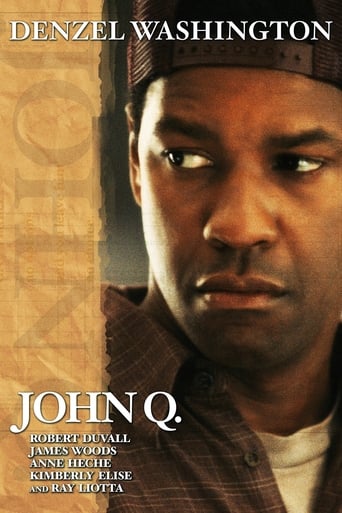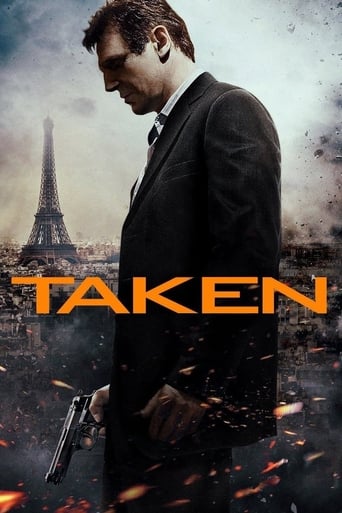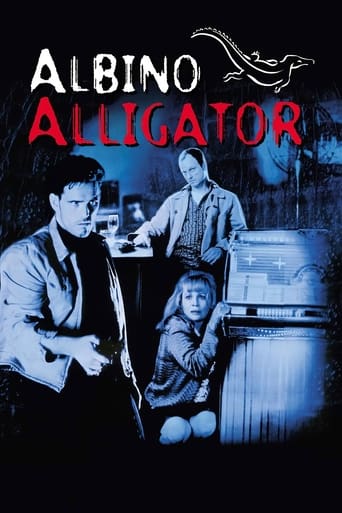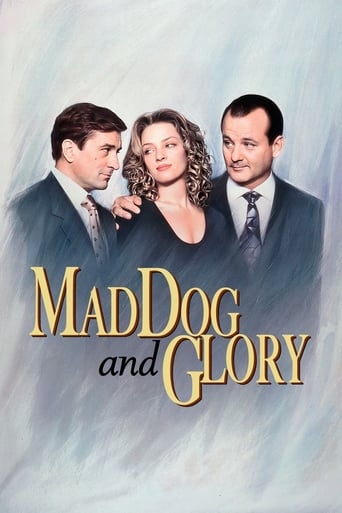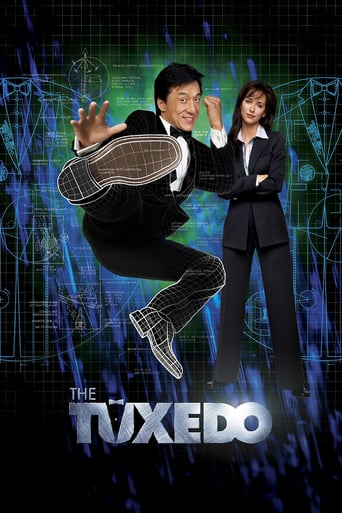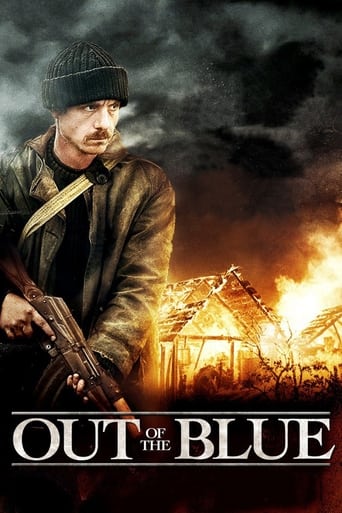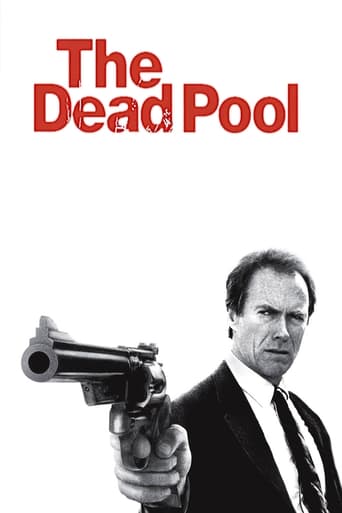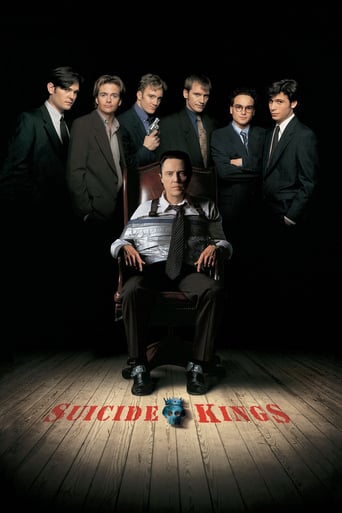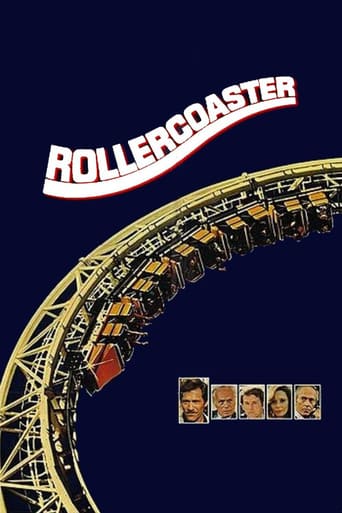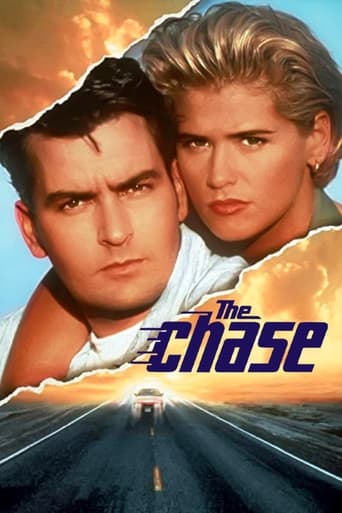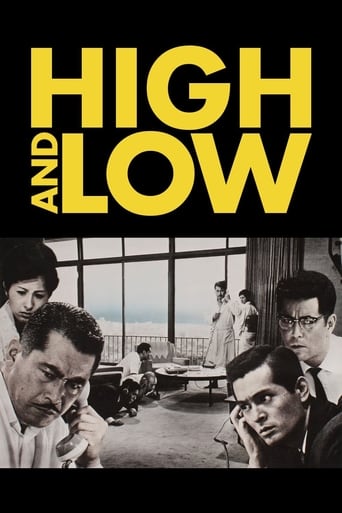
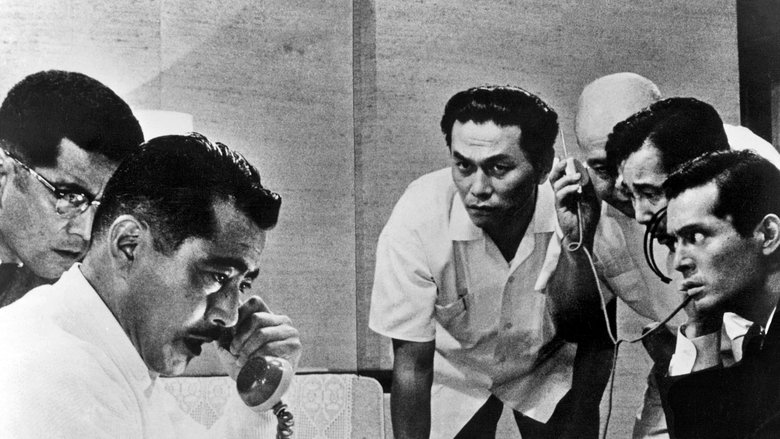
High and Low (1963)
A shoe company executive who has mortgaged everything he has becomes a victim of extortion when his chauffeur's son is kidnapped and is conflicted over whether he should pay the ransom.
Watch Trailer
Cast


Similar titles
Reviews
Kurosawa made such good movies, even gems like these get ignored. Though filmed in 1963, it holds up really well even today and doesn't feel like a old movie because it was way ahead of it's time. The Kidnapping itself was orchestrated so well, it led to rise in Kidnappings in Japan post the movie's release. The movie must be watched for another reason, the Police procedure. It's depicted with realism, intensity, yet it never becomes complex for an average viewer. The best thing about Kurosawa, much like Ray, is the fact, his movies are simple yet so powerful, and are accessible to everybody. Highly recommended.
Up till now I've only seen Toshiro Mifune in Kurosawa's samurai movies, so it was kind of comical to see and hear him in this film when he stated "Shoes are my life". It just struck me as rather funny, but then, almost on a dime, Mifune's character Kingo Gondo reacted to his young son playing cowboys with a friend by stating that in a tense situation, "Man must kill or be killed". That had to be a subliminal rationale for Gondo's decision to wrest control of his National Shoe Company away from the owner and executive board. Borrowing against everything he owned, he was about to make a business deal that would have set him up for life.The first half of this movie sets up a moral dilemma for Gondo after a kidnapping gone awry puts him in the position of having to come up with a thirty million yen ransom, not for his own son, but for the son of his chauffeur. Without having knowledge of the Japanese mindset, I had trouble understanding why Gondo would have refused to pay the ransom if it meant his son's friend might be faced with death at the hands of a maniacal kidnapper. Granted, we had insight on the strings Gondo had to pull in order to put together the takeover plan for his company, but to my mind, the scales were balanced in favor of saving the kid. It was interesting to see how it was Gondo's wife and chauffeur who appealed to his better nature and not the police detectives assigned to the kidnapping case. Chief Inspector Tokura (Tatsuya Nakadai) remained emotionally detached during these confrontations, which struck me as somewhat odd.What's also intriguing is how the film switches gears in the second half after the ransom demand is finally met, and the police begin their work to solve the crime and capture the kidnapper. The forensic work of the detectives is quite significant in scope, taking into account such features as train schedules, landscape, locations of phone booths near Gondo's home, and the recollections of the young kidnap victim who was released after the ransom was paid. Having identified the perpetrator however, I was left stymied as to why the detective team failed to make an immediate move on Ginjiro Takeuchi (Tsutomu Yamazaki) when they had a chance more than once on the street. Since the apprehension was eventually made at a hideout location identified by Tokura, it didn't make sense to me why the police waited, other than as a concession to the script. Nothing of significance occurred with the kidnap suspect to suggest the cops should have delayed.The final sequence in which Takeuchi requested a face to face meeting with Gondo reminded me of a similar scene in the 1938 film "Angels With Dirty Faces". Only in that movie, Cagney's Rocky Sullivan went 'yellow' at the request of his childhood friend Father Jerry, whereas Takeuchi transformed from an arrogant and smug wise guy into that of a cowardly punk in the face of execution for the murder of his two associates in the kidnapping case. Except for Gondo appearing at the meeting with Takeuchi, the disappearance of Mifune's character in the second half of the story almost made it feel like one is watching a different movie.
Two-part story, one narrative following Mr. Gondo's kidnapping narrative, and the other following the police investigation to track down the perpetrators. A honest businessman is the center of a scandal as his housekeeper's child is kidnapped and held for ransom. To make matters worse , he's infighting with his company directors who are trying to steal his shares and get him fired. He decides against paying the ransom and hires detectives to track down the kidnappers, but through guilt decides to give in to the captors demands. The Detectives, seeing the honest side of the mega-businessman, decide to do evverything in their power to bring the culprit to justice. They trace his calls, study daylight cycles of phone booths, investigate seashore with son, and track down all trolleys and serum merchants. The investigation leads the cops down a path of murder, heroin, extortion, and stake-outs in this intense original thriller .Highly intelligent movie
I have long been convinced that the best film adaptations are when filmmakers take pulpy works--The Godfather, Jaws, etc.--and invest them with greater meaning. Exhibit A could certainly be this Kurosawa classic, based on Ed McBain's "King's Ransom", which takes a rather straightforward police procedural and transforms it into a powerful examination of moral culpability and the toxic effects of poverty. What I like most about this film--besides the gorgeous wide-angle compositions--is the deliberateness of it; Kurasowa never rushes as he follows the police tracking their quarry, a refreshing change of pace from the frenetic quality of so many movies today.


